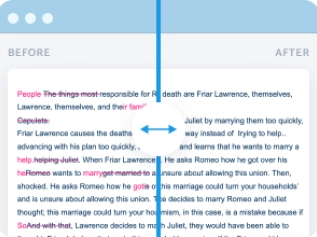What is a Virtual Classroom: Definition & Uses
Table of contents
A virtual classroom is an online learning environment where teachers and students connect through video, chat and interactive tools. Unlike static courses, it enables real-time interaction, resource sharing and collaboration.
Virtual classrooms are used in schools, universities and corporate training to provide flexible, accessible and engaging education worldwide.
What Is a Virtual Classroom?
A virtual classroom goes beyond just posting course materials online. It’s an interactive digital space where educators deliver lessons, facilitate discussions and monitor student progress using technology. Key features often include video conferencing, breakout rooms for group work, shared whiteboards and integrated quizzes.
Unlike traditional online courses that may be self-paced and asynchronous, virtual classrooms focus on real-time interaction. They recreate the structure of a physical class while adding flexibility and accessibility for learners across the globe.
This makes virtual classrooms an essential part of modern e-learning, bridging the gap between traditional education and fully digital formats.
Virtual Classroom vs. Online Course
| Feature | Virtual Classroom | Online Course |
|---|---|---|
| Format | Real-time (synchronous) with live interaction | Usually self-paced (asynchronous) |
| Interaction | High – video, chat, group work | Limited – discussion boards, recorded lectures |
| Tools | Whiteboards, breakout rooms, polls, quizzes | Pre-recorded videos, readings, assignments |
| Flexibility | Scheduled sessions, requires attendance | Fully flexible, complete anytime |
| Examples | Zoom classes, Google Classroom, Blackboard sessions | MOOCs on Coursera, Udemy, Khan Academy |
Functionality and Usage of Virtual Classrooms
Virtual classrooms provide an environment that closely mirrors the dynamics of a traditional classroom, but with the added benefits of technology. Their functionality covers multiple areas:
- Live instruction: Teachers can deliver lectures in real time using video conferencing, supported by screen sharing and virtual whiteboards.
- Collaboration tools: Students work together in breakout rooms, group chats, or shared documents to solve problems and complete projects.
- Assessment and feedback: Integrated quizzes, polls, and assignments help track progress instantly.
- Resource sharing: Course materials, presentations, and recordings are accessible from a single online hub.
Virtual classrooms are used not only by universities and schools but also by innovative institutions like Astra Nova School, which adopt a fully digital approach to provide global students with engaging, discussion-based learning.
Corporate training programs, professional certifications, and even extracurricular courses increasingly rely on this model as well.
Practical applications of virtual classrooms:
- Higher education: Universities use them to deliver online degree programs and blended learning courses.
- K–12 schools: Many schools integrate virtual classrooms to supplement in-person lessons or reach students remotely.
- Corporate training: Businesses rely on them for onboarding, skill development, and compliance training.
- Professional development: Working adults join virtual classes for certifications or industry-specific training.
- Extracurricular learning: Language courses, music lessons, and even coding bootcamps use virtual classrooms to connect learners globally.
Virtual Classrooms in E-Learning
Virtual classrooms play a central role in the broader field of e-learning. Unlike simple online courses, they provide a structured space for real-time interaction, collaboration and guided instruction. This makes them essential for institutions that want to combine accessibility with active learning.
In higher education, virtual classrooms are used in blended learning models where students alternate between in-person sessions and online participation. They also support lifelong learning, enabling professionals to acquire new skills without leaving their jobs. For schools, virtual classes allow students from different locations to access the same quality of education.
Moreover, virtual classrooms are often viewed as stepping stones toward future developments in online education, including AI-powered adaptive learning systems, virtual reality environments, and more personalized student experiences. Their integration shows how e-learning continues to evolve beyond static, self-paced courses.
Popular Virtual Classroom Solutions
Today, there are many platforms that offer robust virtual classroom experiences. Some of the most widely used solutions include:
-
Zoom – One of the most popular tools for live classes, offering breakout rooms, polls, and screen sharing.
-
Microsoft Teams – Integrates seamlessly with Office 365, making it ideal for schools and businesses already using Microsoft products.
-
Google Classroom – Free and widely accessible, especially for schools; it combines file sharing, assignments, and video sessions.
-
Blackboard Collaborate – A higher education–focused platform with advanced features for assessments and integrations.
-
Moodle – An open-source learning management system that can be customized for both synchronous and asynchronous learning.
Virtual classroom platforms are not limited to one country. For instance, many institutions highlight online education opportunities in Canada, where universities adopt Zoom or Moodle to deliver degree programs to both local and international students. These solutions demonstrate how flexible and global online learning has become.
How to Create a Virtual Classroom
Setting up a virtual classroom requires more than just choosing a video conferencing app. It involves planning, structure, and the right mix of tools. Here are the essential steps:
-
Select a platform – Choose software that matches your needs (e.g., Zoom for live classes, Moodle for full course management, Google Classroom for schools).
-
Set up roles and access – Define who will be instructors, assistants, and students. Adjust permissions so participants can join easily.
-
Upload learning materials – Add presentations, readings, and assignments in advance so students have everything in one place.
-
Enable interactive tools – Use polls, breakout rooms, or shared whiteboards to make sessions more engaging.
-
Test your setup – Run a trial class to check audio, video, and connectivity before going live.
-
Establish class rules – Share basic etiquette (muting mics, raising hands, participation) to ensure smooth interaction.
A well-structured setup not only improves efficiency but also helps learners feel that the virtual space is as engaging and organized as a physical classroom.
Advantages and Disadvantages of Virtual Classrooms
Like any learning model, virtual classrooms come with strengths and limitations.
➕ Advantages:
- Accessibility: Students can join classes from anywhere, removing geographic barriers.
- Flexibility: Ideal for working adults or those balancing multiple commitments.
- Cost savings: Lower expenses for travel, housing, and campus facilities.
➖ Disadvantages:
- Reduced social interaction: Online settings cannot fully replace campus life.
- Discipline challenges: Some students struggle with motivation and routine.
- Technical issues: Poor internet or outdated devices can disrupt learning.
Virtual classrooms are highly effective when managed well, but they require reliable technology and motivated learners to succeed.
Examples and Impact of Virtual Classrooms
Virtual classrooms exist in many forms, ranging from large-scale open courses to focused, degree-oriented programs.
- MOOCs (Massive Open Online Courses): Platforms like Coursera or edX allow anyone to enroll in online classes, often free of charge, and earn certificates from top universities.
- Online degree programs: Many institutions now offer full undergraduate and graduate programs entirely online, giving international students the chance to study at universities without relocating.
- Global shift during COVID-19: At the height of the pandemic, nearly all schools and universities transitioned to virtual classrooms. This rapid change demonstrated the scalability of digital learning and normalized online education for millions of students worldwide.
It’s had a big impact: education is more inclusive, flexible and global. And it’s exposed the challenges of unequal access to technology and the need for new teaching methods. These lessons will shape how virtual classrooms are embedded into long term education systems.
Conclusion
Virtual classrooms have changed the way education is delivered by making learning more accessible, flexible and inclusive. They proved themselves during the COVID-19 pandemic and will continue to open up opportunities for students and professionals worldwide.
While there are still challenges of limited social interaction and technical barriers, it’s looking good. With AI driven personalization, immersive VR environments and smarter teaching tools virtual classrooms will continue to evolve and bring education to everyone.








